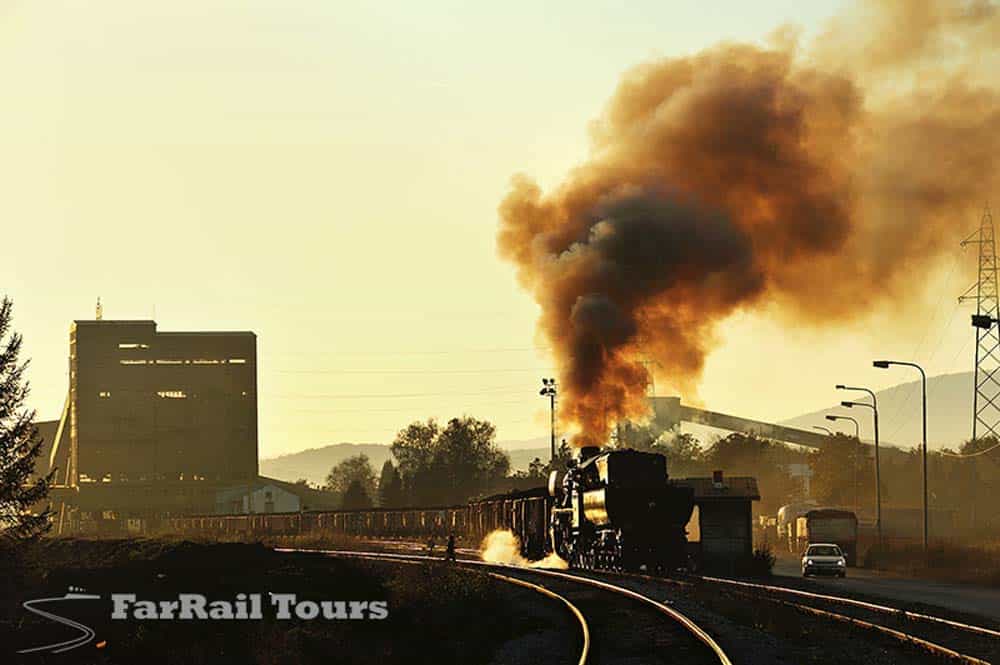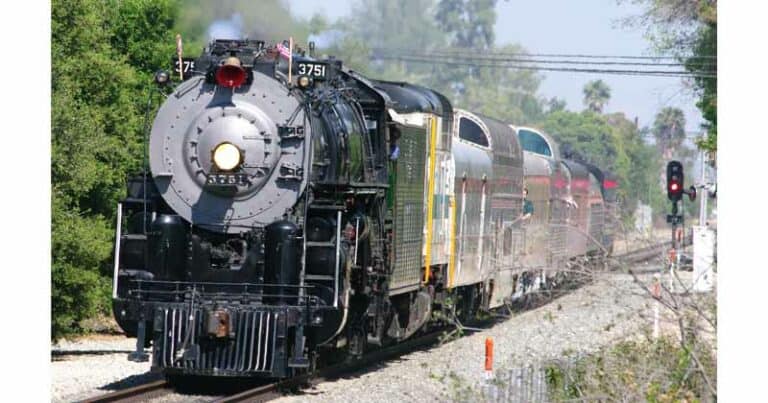Amazing! Steam in Freight Service in 2022
Steam locomotives are still used – in daily service – to haul coal from a mine to the Tuzla Thermal Power Plant in Bosnia-Herzegovina. What may be more amazing is the steam locomotives used are 80 years old, but were designed to last only ten years. Steam in freight service in 2022!

Who would design a steam locomotive to last only ten years? Nazi Germany, in World War 2. As the Nazis plotted to take over all of Europe and Russia in the 1930s and ’40s, and as the war heated up, they needed a lot of locomotives to haul material and troops. They designed the famous Kriegloksomotive, or War Locomotive. Knowing they needed a heavy locomotive fast and cheap, but only needed it for an estimated ten years, the Nazis designed the big 2-10-0 Class 52 Kriegloksomotive.
Over 6,000 of these locomotives were built, all during the war years between 1942 and 1945. Most were built in Germany although some were built in Poland and Austria. Many were built with forced labor from concentration camps. The design was developed by a German War Committee, the “Rail Vehicles Main Committee”. The goal was to imitate the success of a similar program in the United States during World War 1, by the United States Railroad Administration (USRA).
You can see these beasts in operation on YouTube: “Last WW2 German Trains Still in Service”.
The Class 52 Kriegloksomotiven was designed more simply than “modern” steam locomotives of the period. Fewer parts, larger assemblies and the use of cheaper, but sturdy material. It may be the simple design that has allowed this locomotive, above all others, to stay in commercial service. The war also spread these machines all over Germany and occupied Europe and Russia. The end of the war saw many left in those counties and repurposed by their new owners.

With over 6,000 built to the same specification, by 17 manufactures, spread over three counties, the locomotives were readily available after the war. Also available was a trained workforce and spare parts. So many were Kriegloksomotiven were put to immediate use by the allies and railways of the recently occupied countries.
The Soviet-era E Class is another steam locomotive built in huge numbers. It’s thought to be the most numerous of all steam locomotives built.
Due to the nature of the Nazi occupation, Kriegloksomotiven were spread all over Europe. A few are preserved in museums. At least one is preserved in Russia at the Podmoskovnaya Depot in Moscow where it is to be cosmetically restored. Many of the Kriegloksomotiven inherited by the Soviet Union ended up in their strategic reserve, where they rotted and rusted away in huge lines of steam locomotive waiting for a “national emergency” call that never came.
A Class 52 on display, and animated (sound can be loud), at the Technology Museum in Sinsheim, Germany.
(Video: Schlurcher via CC by 3.0)
After the war the Soviet Union inherited over 2,000 Kriegloks, becoming their Te Class. Poland had over 1,000 and East Germany had nearly 1,000 while West Germany rebuilt their Class 52 locomotives and then replaced them fairly quickly with diesels and electric locomotives. Austria continued to use some Kriegloksomotiven steam in freight service on the national railway until 1976.
Steam in Freight Service, Daily!
Yugoslavia inherited many of these locomotives at the end of the war. With the break-up of Yugoslavia in the early 1990s, some of those locomotives stayed in the new country of Bosnia and Herzegovina. Gradually the few steam locomotives still in service gave way to dieselization – except in the Bukinje area.
Today the mining company has five of these Class 52 Kreigsloks (as they are known). Two are in everyday service either at the mine or on the short haul from the mine to the power plant. One is kept at the ready should either of the in-use locomotives need immediate and minor repairs. Another is undergoing an overhaul while the last is undergoing light maintenance. The company also owns several non operational Kriegsloks used for parts.

Three of the five were built in 1943, two in 1944. They regularly haul 20-ton trains of coal and can do their job at a steady 30 MPH (50 KMH). Why are they still used? Not for tourists, though you can see those via a tour, but out of necessity. New or even used diesels are not in the budget when these steam engines do the job and a knowledgeable workforce is available to keep them running. And working a coal mine means fuel is easily available and cheap.
However, management has made proposals to have diesels take over the remaining steam-powered chores. In the last couple of years, the company has purchased a couple of used diesels that do more and more of the mainline work. While the company has a lot invested in keeping these “relics” working, including a shop capable of a complete overhaul, at some point maintenance issues and an increased budget, will mean the end of big steam in freight service.


Railfan and model railroader. Writer and consumer of railroad news and information.







